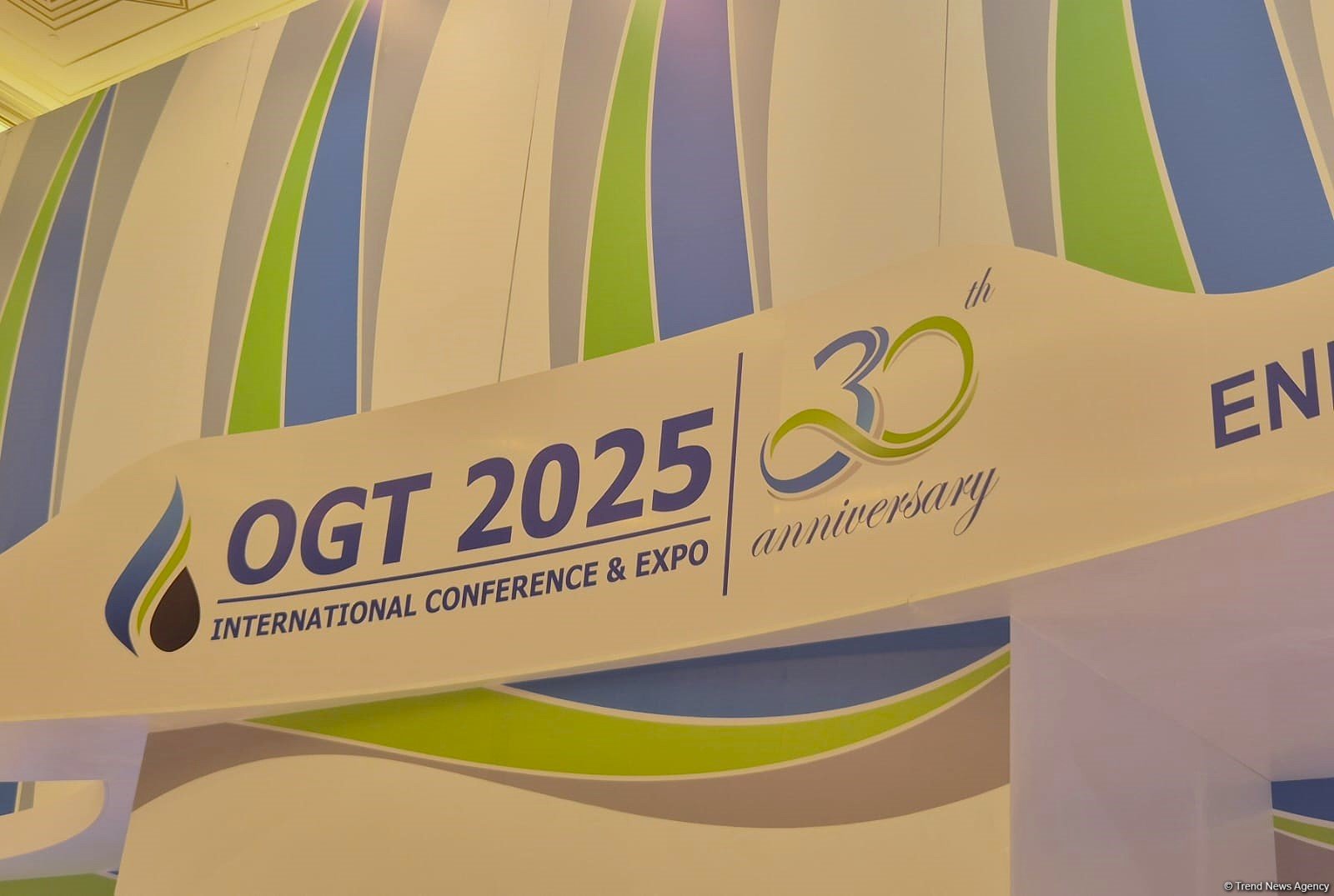BAKU, Azerbaijan, October 28. The 30th Anniversary International Conference and Exhibition “Oil and Gas of Turkmenistan – 2025” (OGT-2025), held under the slogan “Energy. Innovation. Development,” has concluded in Ashgabat, Turkmenistan. The forum once again put Turkmenistan on the map as a key player in the region's energy game, showcasing its willingness to roll up its sleeves for dialogue and cooperation that benefits all parties involved. Over 400 representatives from top-notch companies and organizations—ranging from Chevron and TotalEnergies to Siemens Energy and Baker Hughes, not to mention SOCAR, CNPC, Petronas, and Dragon Oil—came together from more than 60 countries to chew the fat about fresh opportunities in Turkmenistan’s energy sector.
The conference was a real eye-opener, not just to wrap up the industry's latest results but also to put Turkmenistan's best foot forward for foreign companies: extensive initiatives, fiscal robustness, capital allocation certainty, and a progressive reform strategy. Due to the strategic open-door initiative implemented by the President of Turkmenistan, Serdar Berdimuhamedov, the nation is establishing an ecosystem conducive to sustainable, synergistic partnerships with international investors.
At the heart of the national energy strategy lies the Galkynysh field—one of the biggest fish in the sea when it comes to gas fields, boasting estimated reserves that are nothing to sneeze at, totaling 27.4 trillion cubic meters. The potential of it was a hot topic at the conference, stirring the pot and getting everyone’s wheels turning.
Turkmenistan is poised to execute an EPC agreement in 2026 for the fourth phase of the Galkynysh development initiative, targeting a design throughput of 10 billion cubic meters annually. Ashyrguly Begliyev, the presidential adviser on hydrocarbon sector dynamics, articulated at the symposium that the initiative will be entirely underpinned by domestic fiscal resources—a notable instance of financial autonomy that concurrently allows for global technological engagement. As articulated by Murad Archaev, the Deputy Chairman of Turkmengaz, strategic discussions are currently in progress with CNPC and ADNOC regarding the execution of the subsequent phases of development, specifically the second and third phases. This creates opportunities for enterprises capable of delivering cutting-edge engineering innovations, methane emission mitigation methodologies, and sophisticated reservoir optimization frameworks.
For foreign partners, Galkynysh is not merely a cash cow but a golden goose for steady income and energy security, underpinned by a rock-solid political landscape and infrastructure that's ready to roll. Collaborative synergies there yield multifaceted advantages for stakeholders, encompassing augmented technological acumen, strategic infrastructure capital infusion, and bolstered regional robustness.
Another pivotal subject broached at the symposium was the
Turkmenistan–Afghanistan–Pakistan–India (TAPI) pipeline initiative,
which has the potential to facilitate the transmission of up to 33
billion cubic meters of natural gas per annum to the South Asian
market landscape.
“The TAPI pipeline represents a paradigm of inter-regional synergy
and geopolitical equilibrium. The execution of this initiative is
poised to generate novel prospects for all engaged nations and will
function as a conduit linking Central and South Asia,” articulated
Maksat Babaev, Chairman of the State Concern Turkmengaz.
TAPI is viewed not merely as an infrastructure project but as a corridor of cooperation that ensures the region’s sustainable development. The initiative brings new jobs, greater energy access, and stronger economic links to the participating countries—developments made possible by Turkmenistan’s openness to international partners.
Muhammedmyrat Amanov, Chief Executive Officer of TAPI Pipeline
Company Ltd., drove home that the finalization of the pipeline
segment in Herat is projected to culminate by the conclusion of
2026. U.S. enterprises have also articulated their engagement in
the initiative. Samantha Carl-Yoder of Brownstein Hyatt Farber
Schreck affirmed that U.S. stakeholders are evaluating engagement
from major energy players, including ExxonMobil and Chevron. The
backing from global financial entities enhances the project's
robustness and fortitude.
Turkmenistan is enhancing its geopolitical synergies not solely
with adjacent sovereign entities but also with international energy
hubs. Dragon Oil (UAE) has unveiled a strategic initiative to
escalate its output to 200,000 barrels per day by 2030, underpinned
by an investment exceeding $11 billion and the execution of
approximately 200 community engagement projects.
“Turkmenistan continues to be a pivotal focus area for our
strategic initiatives. The organization is poised to sustain its
capital allocation towards optimizing production throughput and
engaging in socio-economic initiatives that bolster regional
advancement,” stated Saeed Mohammed Al Tayer, Chairman of Dragon
Oil.
Collaborations with entities like Dragon Oil, SOCAR, and CNPC
yield substantial synergies for all stakeholders involved: the
facilitation of technology transfer, the establishment of
innovative manufacturing infrastructures, capital influxes, and the
enhancement of human capital development. The emergence of these
prospects can be attributed to Turkmenistan's liberalized
engagement framework, which facilitates a stable and clear
operational environment for international capital influx.
SOCAR perceives its collaboration with Ashgabat as a pivotal
element in the framework of sustainable energy integration within
the Caspian Basin ecosystem. Türkiye, via its state-owned
enterprise BOTAŞ, aims to amplify the influx of Turkmen gas into
the European market, thereby positioning the region as a pivotal
nexus for energy security.
For OGT-2025 participants, Turkmenistan turned into a melting pot where energy and diplomacy shake hands: fresh avenues of collaboration are sprouting—from joint R&D and technological clusters to investment agreements under production-sharing models.
Turkmenistan has consistently shown that energy stability can go hand in hand with environmental responsibility. In 2023, methane emissions fell by some 60 percent, a development UNECE described as a systemic achievement. The World Bank’s “Zero Routine Flaring by 2030” initiative is actively supported by the Turkmen side and is already yielding results.
“The World Bank supports Turkmenistan’s efforts to reduce its carbon footprint and to develop clean technologies. We see potential here for investments that will promote sustainable growth and economic diversification,” said Robert van der Geest, Senior Gas Specialist at the World Bank.
Cooperation with international institutions helps introduce advanced environmental standards, modernize infrastructure, and increase the competitiveness of the economy—reinforcing the country’s open-door strategy and creating new opportunities for partners.
OGT-2025 has put the nail in the coffin on the notion that Turkmenistan is just a run-of-the-mill energy supplier; instead, it’s stepping up to the plate as a strategic partner, rolling out a sustainable, diversified, and open model of cooperation that’s worth its weight in gold. The development of Galkynysh, the realization of TAPI, field digitalization, participation in international climate initiatives, and the growth of renewable energy all form a unique combination of factors that make the country attractive to global investors.
The President of Turkmenistan’s open-door strategy has facilitated the emergence of these prospects, bolstered transnational collaboration, and guaranteed tangible reciprocal advantages for all stakeholders involved in the initiatives. For international enterprises, Turkmenistan represents not merely a marketplace but a dynamic ecosystem for strategic expansion where energy resources and innovative paradigms fundamentally propel advancement.







